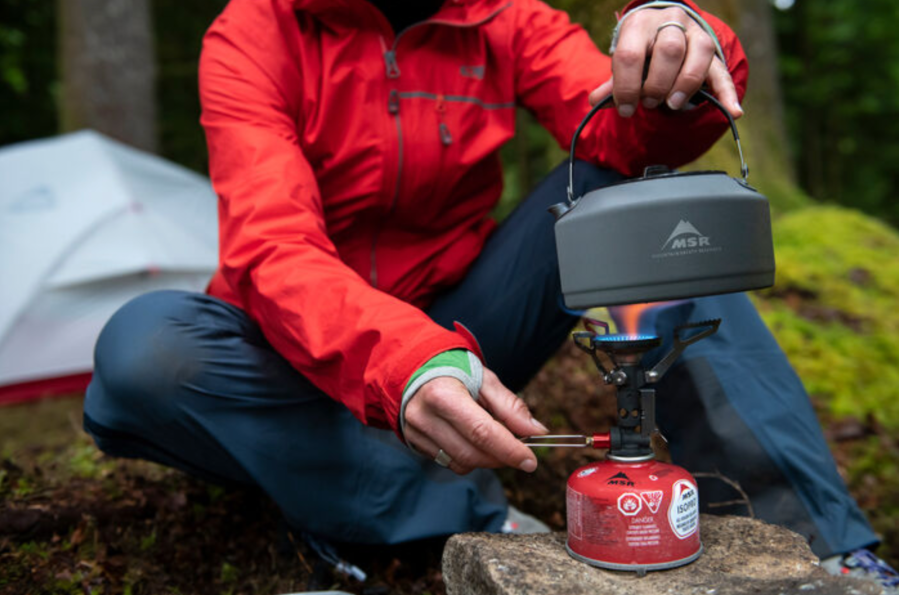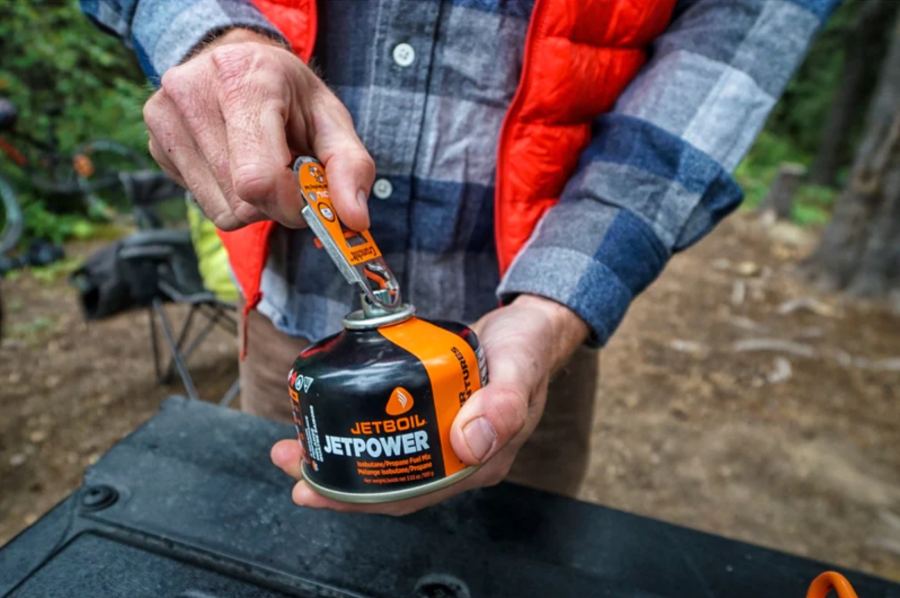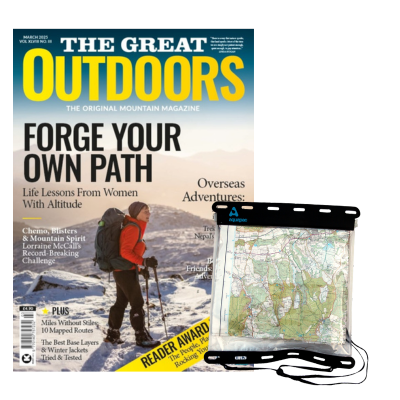It’s a good idea to learn how to store and transport your camping stove properly to help your kit last a long time, work effectively in the hills and – most importantly – so you can ensure your safety and avoid any explosive accidents.
In this article, we’ll cover:
- How to store camping stoves
- How to store camping gas canisters
- How to dispose of empty gas canisters
- How to store alcohol fuel
- How to transport your camping stove
- How to transport your camping stove internationally
If you’re an avid camper, your stove might live in your backpack, always ready for the next adventure. But this isn’t a great way to store any of your kit. After each trip out, your kit should be unpacked, dried out (when necessary) and stored in a cool, dry place where it is protected from damp, mildew or excessive heat, all of which can warp and damage fabrics and fabric coatings and cause odours to develop.
But, the rules are a little more complex for camping stoves – and the different types of stove you may use.
How to store your camping stove
Storage of camping stoves is dependent on, foremost, the type of fuel you’re using and secondly the system components themselves.
Before storage, ensure you give your camping stove set up time to cool down and burn off any residue fuel, in the case of alcohol or alternative fuel stoves – some of which are foldable in design. The simple components of most canister camping stoves generally boil down (no pun intended) to a burner head and a gas canister.

The MSR Pocket Rocket canister camping stove.
The burner head is simple to store as most come with their own pouches. Disassemble the stove after each use, checking it if needs any maintenance or cleaning. Will Renwick has shared his advice on how to clean your camping stove, should yours be in need of some TLC and causing this morning’s coffee to taste of last night’s curry. Then, ensure you’ve folded the burner head down correctly – these components can be fragile – and pack it away.
Remote-canister stoves will also feature a hose that should be kept coiled tidily with no bends. Integrated stove systems have the benefit of being incredibly neatly packable, by design.
How to store your camping gas canister
The storage of the gas canister itself is slightly more complex due to its highly flammable contents – usually a propane/butane mix, depending on the temperatures of intended use.
Firstly, read the manufacturer’s advice for storage on the canister labels and follow this for specific guidance on the gas canisters you use.
More generally, here are some guidelines for storing gas canisters for camping at home:
- Always store gas canisters in an upright position
- Store them in a dry, well-ventilated place
- Ensure gas canisters are stored away from sources of heat and ignition
- Avoid storing canisters where they may be exposed to direct sunlight
- Avoid storing canisters near electrical outlets or items which generate heat
- Always store canisters out of reach of children and animals
- Butane should never be stored below freezing temperatures
- Propane and kerosene should never be stored in temperatures higher than 120°F (49°C).
As for how to store and transport your camping stove when you’re on a camping trip, the above rules still apply.
For these reasons, it’s preferable not to store gas canisters in your car as vehicles can be prone to heating and canisters may be jostled around in transit. This may not seem like a big deal but the canisters are pressurised so dings and dents can be a problem if the canister is exposed to heat and its contents begin to expand.
Instead, store your gas canister out of direct sunlight in your tent (ideally pitched in a shaded spot) or your backpack when not in use, following the instructions of the manufacturer. If you’re worried about high temperatures inside your tent, particularly in summer, try storing your stove in the porch or perhaps tuck it under your ground sheet to allow the cool ground to keep it from overheating – just don’t forget where you’ve hidden the trip hazard!
How to dispose of empty gas canisters
While it’s sensible and more environmentally-friendly to refill larger gas canisters, this is not an option for small canisters designed for camping. But some outdoor suppliers accept empty canisters. Alternatively, when your gas canister is coming to the end of its use, you can recycle it yourself in accordance with your local authority – just as you would a tin can.
Before you recycle canisters, ensure they are completely empty by running your stove with the valve open until the flame extinguishes. Once you are certain the canister is empty (it should feel very light and make no noise when you shake it) use a tool such as the JetBoil CrunchIt.

The Jetboil CrunchIt.
This tool is designed to safely vent any remaining gas before you can puncture three or four well spaced holes in the canister so it is clearly recognisable as empty. You can also mark the canister as ’empty’ using a pen before recyling.
How to store your alcohol fuel
The rules for storing alcohol fuel are more simple. As always, read the manufacturer’s guidelines as a first port of call and check the region’s rules on fuel storage. For example, in some countries it is prohibited to use a food container for storage of fuel.
Otherwise, liquid fuel can be stored in a plastic bottle or if you prefer eco-conscious reusable bottles – which also negate the need for appropriate disposal. Try a Nalgene or Platypus – Vargo Outdoor even manufacturers a bottle specifically designed for denatured alcohol. Just make sure you label this clear liquid with a clear ‘do not drink’ message, adding a ‘poison’ warning for extra measure!
Petrol fuels sometimes come stored in metal canisters for safety reasons. For either alcohol or petrol fuels, if you choose to use a plastic bottle for lightweight storage and transport, be incredibly weary of leakages and spillages. Both liquids are extremely flammable and it’s best to proceed with caution. It may be worth investing in a funnel, syringe or fuel stabiliser bottle which are designed with a measuring chamber and sometimes an easy-pour top.
How to transport your camping stove
You’ll likely be transporting your camping stove – for the most part – on foot within the confines of your backpack. As a bulkier item, it’s wise to pack your camping stove system in the main body of your pack. After you’ve packed your tent, sleeping bag and mat, in goes the camping stove, close to the back panel for stability and load spread. Pack your firestarting system away from your stove. Beyond that, try nesting everything together tightly, using a lightweight piece of cloth or clothing to prevent rattles. For more detailed advice see our article on how to pack for multi-day treks.
How to transport your camping stove internationally
International air travel with a camping stove is entirely dependent on where you’ll be travelling to and the country’s regulations. While it is possible to travel with your camping stove, fuel is largely a no-no and ensuring your canister or fuel storage is entirely empty is a challenge.

Testing the MRS Reaktor in Glen Feshie.
Credit: David Lintern
In the UK, the Civil Aviation Authority say, “Camping stoves (gas or flammable liquid fuelled) that have been used or are new and have their fuel attached, are normally not permitted; however, there are some circumstances when stoves that have been completely purged fully clean of fuel can be carried. Bear in mind that if the stove is used during your travels, you may not carry it on any subsequent flights. Contact your airline for more details prior to travel.”
On the other hand the Transportation Security Administration in the US say, “Camp stoves are allowed in carry-on or checked bags only if they are empty of all fuel and cleaned so that no fuel vapors or residue remain. Please wrap cords and layer items in bags so officers can get a clear view of the items.” But, ultimately, the final decision on whether your item is allowed through the checkpoint rests with the individual TSA officer.
It isn’t recommended to take the risk as there’s every chance you’ll have parts or all of your camping stove confiscated. To dodge some of the red tape, you could purchase your fuel upon arrival – making sure it’s compatible with your kit and supporting local businesses along the way.
Read more: Learn how to cook in camp with Alex Roddie.
Main image credit: Taryn Elliott








